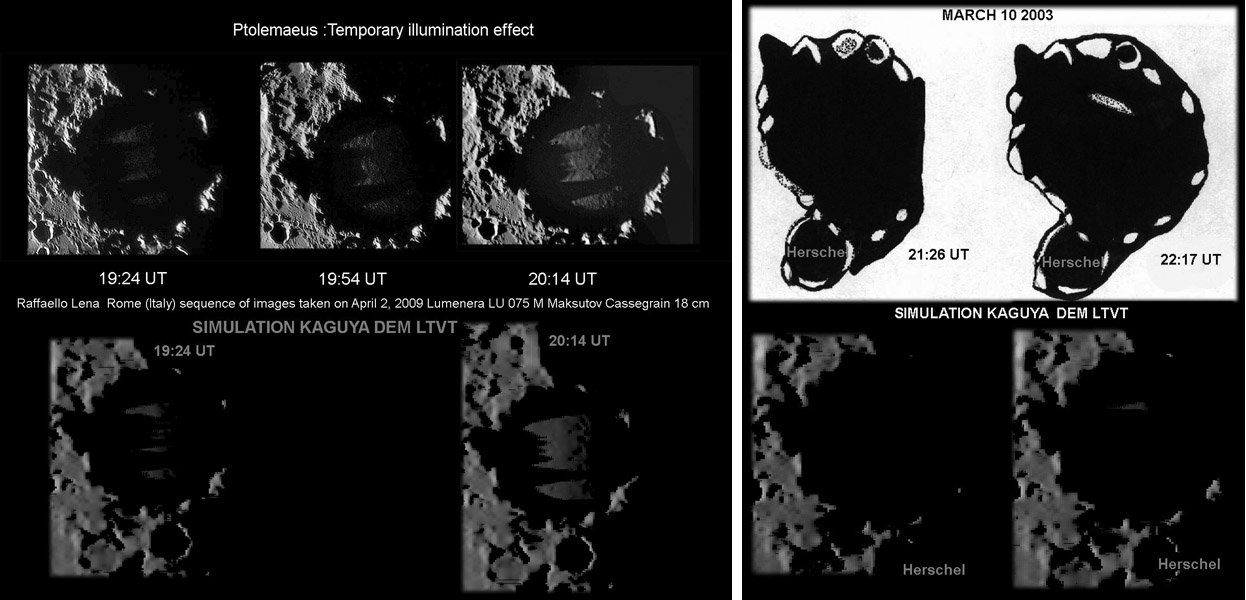February 14, 2019
Testing TLPs
Originally published December 6, 2009

images and simulations by Raf Lena, Rome, Italy. You may need to adjust your monitor to see the faint spots of the floor.
Transient Lunar Phenomenon are a little like flying saucer reports. Few people see them, they are rarely confirmed, and there is great uncertainty of their reality. Raf Lena and colleagues in the Lunar Research Group have previously observed a few historic TLP reports, finding that when the exact same illumination conditions (including librations) occur, that the TLP reappears. This proves that these particular TLPs are simply fleeting illuminations of a crater's floor that occur only with specific conditions. No levitating dust, gaseous discharges or other mysteries are required. The problem is that it may take an entire 18 year saros cycle for an exact repeat observation of any specific reported TLP, and there may be clouds on the night of interest. But now two advances in technology permit every entry in the TLP catalogs to be examined under conditions identical to each observation. The recent release of the Kaguya digital elevation model (DEM), which is based on more than 6 million laser pings of the surface, provides a detailed enough map to use ray tracing to recreate any illumination. Jim Mosher has updated the LTVT program so that it easily reads the DEM and rotates the virtual surface to exactly the lighting conditions at any instant. Raf has used this capability to compare actual observations with a DEM-LTVT simulation for two events in Ptolemaeus. The right image set has a drawing Raf made in 2003 during an exact repeat of a classic Ptolemaeus haze report. The simulation shows that the crater rim allows a swath of illumination to fall of the floor exactly as observed. The left image set shows that another temporary illumination of the floor can be shown by the simulation to be due to the geometry of rim and floor. This new capability will quickly show which classic TLPs are repeatable, and which can not be explained that way. Who says we can't resolve mysteries?
Chuck Wood
Related Links
Rükl plate 44
OT Note: Sometime the width of the text for an LPOD is too great for easy reading. It is determined by the width of the image and is otherwise uncontrollable. I've just learned of a simple tool - Readability - that allows you to view LPOD or any website with text size and width that fits your preferences. Try it - of course, you don't see the LPOD navigation menus and the rotating Earth, but the back button will restore access.
Yesterday's LPOD: Terminator Tales
Tomorrow's LPOD: Gerard And Me
COMMENTS?
Register, Log in, and join in the comments.



